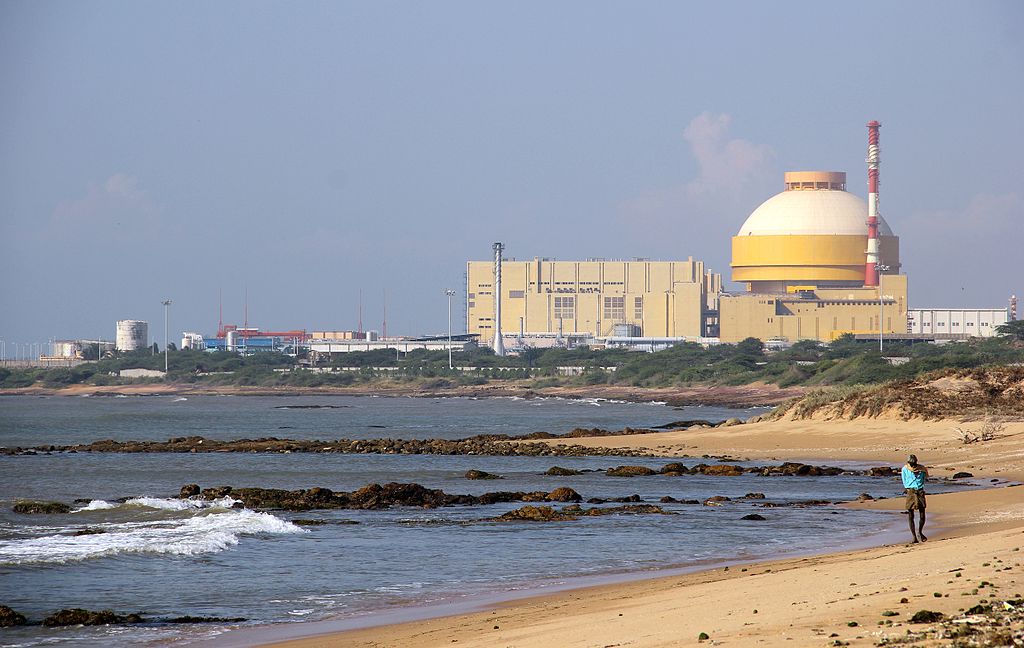Kudankulam Nuclear Power Plant can withstand Fukushima-like accident, claims Russian official
08/04/2016 / By fukushima

The two units of India’s Kudankulam Nuclear Power Plant (KKNPP), which is being implemented with strong safety enhancement requirement, can withstand an energy accident like the Fukushima Daiichi nuclear disaster of 2011 in Japan, a Russian nuclear industry official has said.
(Article by FP Staff)
In an interview to The Hindu, Vladimir Angelov, director of projects for the ASE group of companies in India, said, “We analysed the basic technical design of Units 1 and 2 in terms of the lessons from Fukushima. We came to the conclusion that they would have withstood a Fukushima-like incident.”
In addition to the successful implementation of two units, the Rosatom state nuclear corporation, the Indo-Russia nuclear cooperation, will construct six units of VVER-1000 light-water reactors at Kudankulam, The Hindu reported.
Local anti-nuclear activists like S P Udayakumar dub the reactors at Kudankulam as “unsafe” and call them a huge risk for the people living around the giant reactors. The fairly affluent fisher folk who inhabit the village closest to the nuclear reactors called Idinthakarai erupted against the establishment of the atomic reactors in their backyard and forced the plant authorities to delay the start of the reactors.
Even as Russia’s nuclear official claims to have undertaken stringent safety measures to avoid any disaster in future, the Kakrapar Atomic Power Station in Gujarat has remained shut for nearly four months after a leak in the nuclear island of the reactor forced an emergency shut down of a fully operating plant, a PTI report said in mid July. The development has resulted in farming suspicion about the safety of nuclear power plants in general.
The bigger headache for the Indian nuclear engineers is that even after several months of investigation the exact reason why the ‘leak’ took place remains a mystery.
According to AERB, preliminary investigation have revealed that “the failed coolant channel is seen to have three cracks… the leaky coolant channel is yet to be removed from the reactor for detailed failure analysis and establishing the causes. The Russian officials comments to The Hindu assumes significance in this context.
For Nuclear Power Corporation of India Ltd (NPCIL), the two units of Kudankulam project are expected to contribute handsomely to its top line and bottom line.
The first unit experienced several hiccups since starting commercial production in December 2014 but seems to have stabilised now, generating about 940 MW daily on an average, a report in IANS in early July had said.
The first unit supplies power to Tamil Nadu (562.5 MW), Puducherry (33.5 MW), Kerala (133 MW), Karnataka (221 MW) and Andhra Pradesh (50 MW). The total outlay on the two units of Kudankulam project has been over Rs 17,000 crore.
Once the second unit at Kudankulam starts power generation to its full capacity, the total atomic power capacity in Tamil Nadu would go up to 2,440 MW.
Already, the NPCIL has two 220 MW units at Kalkpakkam near here under its Madras Atomic Power Station.
Read more at: firstpost.com
Submit a correction >>
Tagged Under:
energy, Fukushima, Kundankulam Nuclear Power Plant, nuclear risks
This article may contain statements that reflect the opinion of the author
RECENT NEWS & ARTICLES
COPYRIGHT © 2017 FUKUSHIMAWATCH.COM
All content posted on this site is protected under Free Speech. FukushimaWatch.com is not responsible for content written by contributing authors. The information on this site is provided for educational and entertainment purposes only. It is not intended as a substitute for professional advice of any kind. FukushimaWatch.com assumes no responsibility for the use or misuse of this material. All trademarks, registered trademarks and service marks mentioned on this site are the property of their respective owners.




















